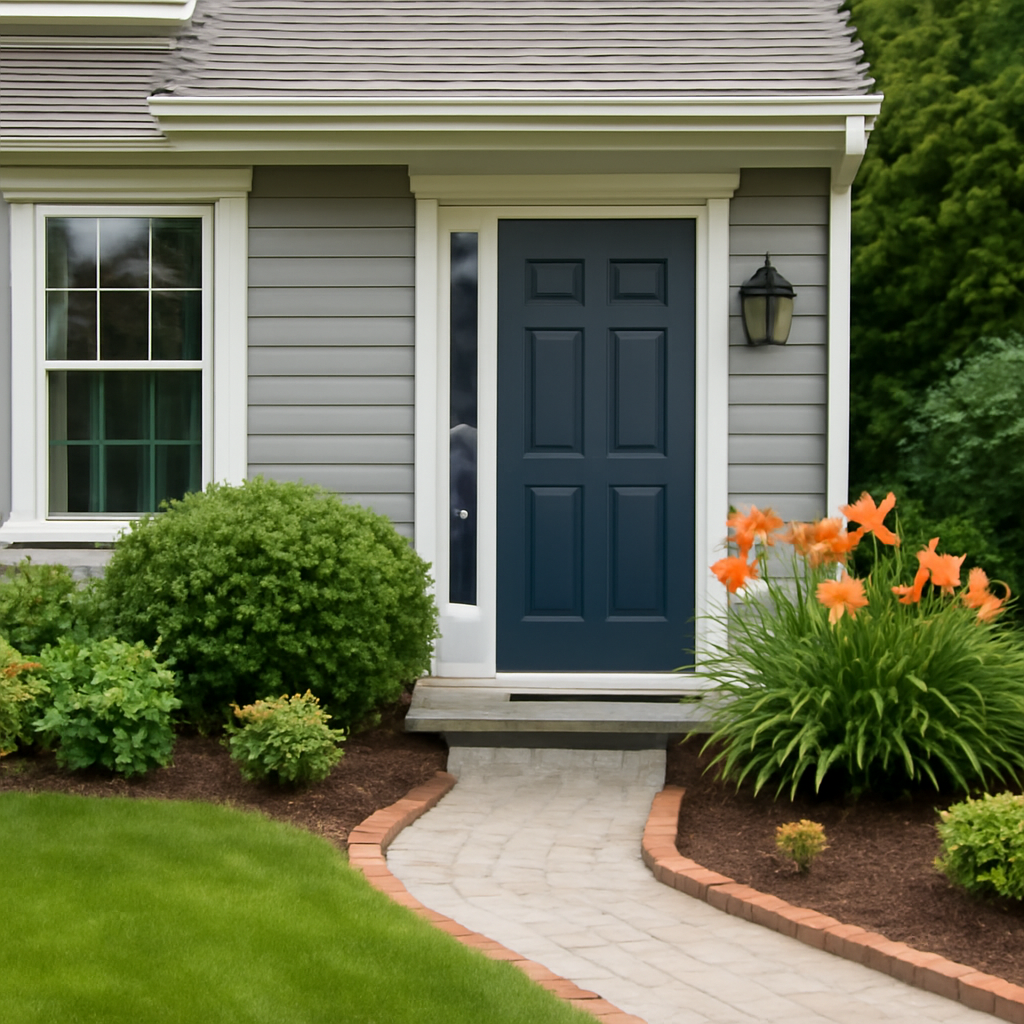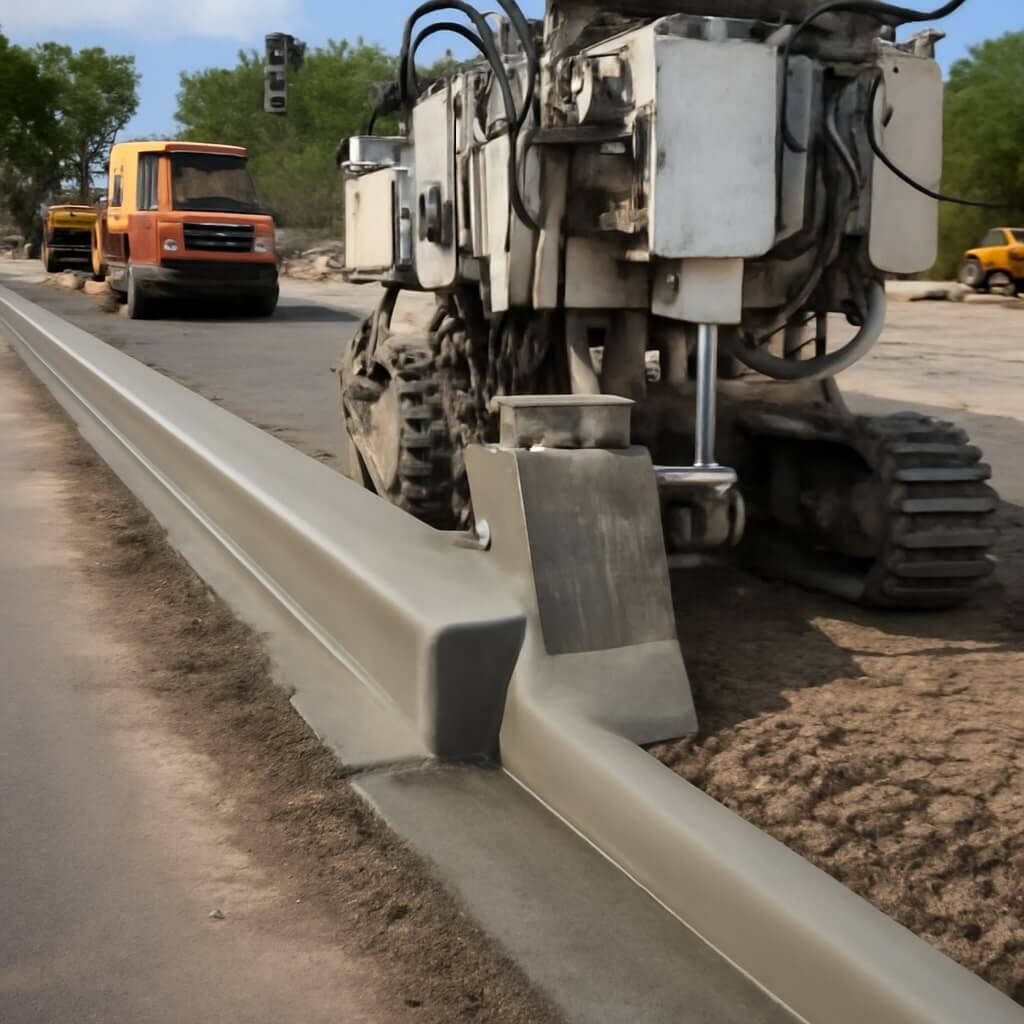Your curb is the first thing visitors and neighbors notice when they approach your home. Whether you’re trying to boost resale value, stand out in the neighborhood, or just create a welcoming environment, curb improvement plays a major role. But it’s not just about looks — the right materials ensure your investment lasts through the seasons and keeps maintenance costs low.
Choosing long-lasting materials for curb improvement is both a functional and aesthetic decision. You want materials that can handle weather, resist decay, and enhance your property’s appearance over time. Let’s dive into the top 10 durable materials that check all the right boxes.
1. Concrete: The Timeless Foundation
Benefits of Using Concrete
Concrete is arguably the most popular material for curb improvement — and for good reason. It’s incredibly durable, affordable, and can be poured into various shapes and forms. Once cured, concrete can withstand extreme temperatures, heavy impacts, and even corrosive substances like road salts.
Popular Finishes and Styles
Gone are the days of dull gray slabs. Modern concrete comes in stamped, brushed, stained, and exposed aggregate finishes. These options mimic natural stone or brick while retaining concrete’s durability and affordability.
Longevity and Maintenance
Concrete can last up to 30 years with minimal upkeep. Regular sealing every few years helps resist cracks and moisture penetration. If damage occurs, patching is usually simple and cost-effective.
2. Brick: A Classic That Never Fades
Brick Styles for Curbs and Edging
Brick lends a charming, traditional look to any landscape. It works beautifully as edging for flower beds, tree rings, or driveways. You can choose from a range of colors and textures, including tumbled, smooth, and antique finishes.
Durability and Weather Resistance
Bricks are known for their strength and resistance to wear. High-quality clay bricks won’t fade, crack, or crumble easily, making them an ideal choice for regions with temperature swings.
Cost vs. Value
Though brick can be more expensive than concrete upfront, its long lifespan and classic appeal often make it worth the investment. Plus, it pairs well with various home exterior styles, boosting property value.
3. Natural Stone: Beauty from the Earth
Types of Stones Used
Granite, slate, sandstone, and limestone are among the most common stones used for curbing. These materials bring unique textures and color variations, perfect for custom, upscale curb designs.
Aesthetic Versatility
No two pieces of stone are alike, offering a bespoke look for every project. Whether you’re aiming for rustic charm or elegant formality, natural stone fits the bill.
Upkeep Considerations
While stone is naturally strong, it may require sealing to resist water absorption and staining. Proper installation with solid footing is key to preventing shifting over time.
4. Pavers: Endless Design Options
Concrete vs. Clay Pavers
Both types offer high strength, but clay pavers retain color longer, while concrete pavers come in more shapes and colors. Either way, they interlock tightly, forming a flexible yet stable surface.
Design Flexibility
From running bond to herringbone patterns, pavers allow endless creativity. They can be used not just for edging, but for full walkways, patios, and driveways that tie your curb aesthetic together.
Installation Tips
A compacted gravel base and sand bedding ensure long-term stability. You may want to edge your paver area with steel or concrete borders to prevent shifting.
5. Asphalt: Cost-Effective and Practical
When to Use Asphalt for Curbing
Asphalt is best used when driveways and streets are being laid or resurfaced. It’s not ideal for decorative edging, but for larger curb projects, it’s hard to beat for price and speed.
Maintenance Routines
Resurfacing every 5–7 years and sealing cracks early can extend asphalt’s life well beyond 20 years. It’s especially suited for colder climates thanks to its flexibility.
Pros and Cons
While asphalt lacks visual flair, it delivers in function and cost savings. Consider decorative alternatives for edging if aesthetics are a top concern.
6. Steel and Metal Edging
Industrial Appeal
Steel and aluminum edging create a clean, modern look that outlines lawns and pathways sharply. It’s a favorite among minimalist and industrial-style landscapes.
Corrosion-Resistant Options
Galvanized and powder-coated options extend lifespan by preventing rust. With proper care, metal edging can last over 25 years.
DIY-Friendly Installation
Metal strips can be hammered directly into the ground with minimal tools. They’re flexible enough to curve around trees or pathways yet strong enough to hold firm.
7. Recycled Materials: Eco-Friendly and Affordable
Rubber Edging Products
Recycled rubber curbs are flexible, shock-absorbent, and child-safe — ideal for playgrounds or gardens. They’re lightweight and resistant to mold and rot.
Reclaimed Concrete and Bricks
Salvaged materials not only save money but also reduce landfill waste. Reclaimed bricks and concrete slabs can be repurposed into borders or walkways with unique character.
Environmental Impact
By reusing materials, you significantly reduce your carbon footprint. Many local suppliers now offer reclaimed curb materials ready for pickup or delivery.
8. Timber: Natural and Inviting
Treated vs. Untreated Wood
Pressure-treated wood resists insects and decay, making it suitable for long-term use. Untreated options may look more natural but degrade faster, especially in wet climates.
Ideal Use Cases
Wood is perfect for raised garden beds, tiered edging, and rustic pathways. Its warm tones pair beautifully with plants and stonework.
Lifespan and Decay Resistance
Expect 10–15 years from treated timber with proper installation and drainage. Annual sealing helps prevent warping and rotting.
9. Composite Materials: Low Maintenance, High Style
What Are Composite Curbs?
Made from a blend of plastic and wood fibers, composite edging mimics the look of timber but with superior durability. It’s resistant to fading, splintering, and moisture.
Color and Texture Options
Available in grays, browns, and even faux grain textures, composites offer a polished look with zero sanding or painting needed.
Mold and Fade Resistance
Because composites are non-porous, they’re ideal for wet or shaded areas prone to mold growth. Most products come with multi-year warranties.
10. Decorative Concrete Borders
Stamped and Colored Borders
By stamping molds into fresh concrete, you can create faux brick, stone, or tile looks. Add pigments for color that won’t peel or flake like paint.
Customization Possibilities
Borders can be curved, textured, or embedded with small stones or glass for a unique flair. They can also incorporate solar lighting or embedded drains.
Integrating with Landscaping
Decorative borders neatly frame flower beds, driveways, and lawns, creating a finished, high-end look that blends function with beauty.
FAQs
1. What’s the most budget-friendly curb material?
Concrete and recycled materials like rubber or reclaimed bricks offer the best bang for your buck.
2. How long does a curb improvement project take?
Most projects take between 1–3 days, depending on the material and complexity.
3. Are DIY curb edging options reliable?
Yes! With the right tools and instructions, materials like pavers, metal, and rubber can be DIY-installed effectively.
4. Can curb materials affect home value?
Absolutely. A clean, well-designed curb adds curb appeal and can increase property value by up to 10%.
5. What materials work best in extreme climates?
Concrete, natural stone, and asphalt are excellent for both hot and cold environments when installed correctly.
6. How do I maintain curb materials over time?
Regular cleaning, sealing, and inspecting for cracks or erosion go a long way. Maintenance varies by material.
Conclusion
Curb improvement isn’t just a cosmetic upgrade — it’s a long-term investment in your home’s functionality and value. Whether you lean toward concrete, the charm of brick, or the sustainability of recycled options, choosing the right material will ensure your curbside looks stunning and lasts for years. Match your material to your climate, budget, and personal style for the best results.



